
While hostas are generally considered to be easy-care plants, some pests, diseases, and growing conditions can cause problems. Here are a few of the most common culprits.
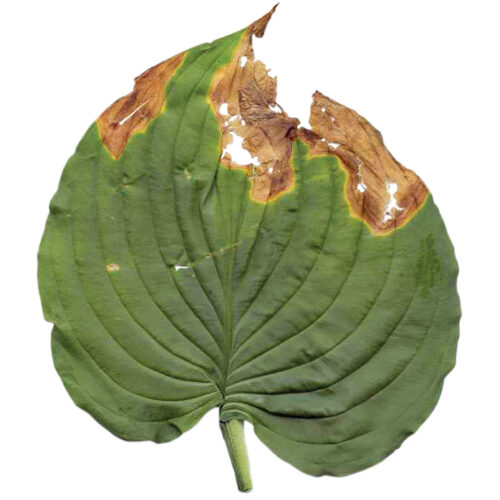
Anthracnose
What it looks like: Leaves have large, irregular, tan or brown spots with dark borders.
What to do: Anthracnose is a fungal disease that causes aesthetic damage but rarely kills hosta plants. Warm temperatures and extended periods of leaf wetness encourage the spread of the fungus. Anything that you can do to keep leaves drier, like using drip irrigation and spacing plants apart for good air movement, can help to stem the development and spread of anthracnose. Remove infected leaves as soon as you notice them, and dispose of them in the trash, not the compost.
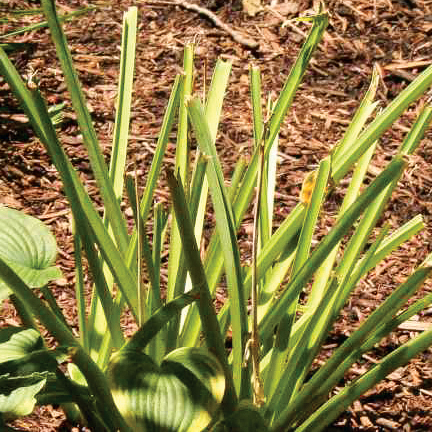
Deer damage
What it looks like: Deer can cause heavy or even complete defoliation, leaving ragged edges on the remaining petioles and leaves.
What to do: An 8- to 10-foot- tall fence is the only (nearly) surefire way to keep deer away from hostas. Scent deterrents based on rotten eggs, dried blood, feather meal, or other bad smells may also keep deer away; switch products regularly to keep the deer from becoming habituated. You can remove damaged parts, or cut the whole plant back to the ground to encourage new growth.
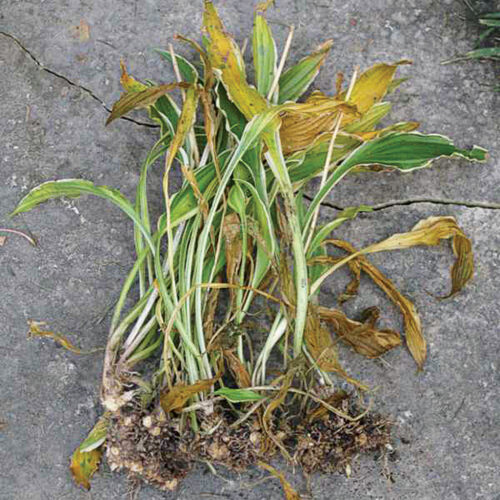
Root damage from voles
What it looks like: The first thing you may notice is wilting plants that lift easily from the ground because roots have been severed. You may also find that an entire section of a plant has disappeared overnight into a previously unnoticed tunnel.
What to do: I am a strong advocate for vole baits with Vitamin D as the active ingredient, which we have found to be very effective on rodents and safe for nontarget pests. As a second means of control, try incorporating small pea gravel into the soil around the roots of your hostas. Don’t bother with planting in wire baskets. They are a disaster to dig around, and voles can simply climb over the edges.
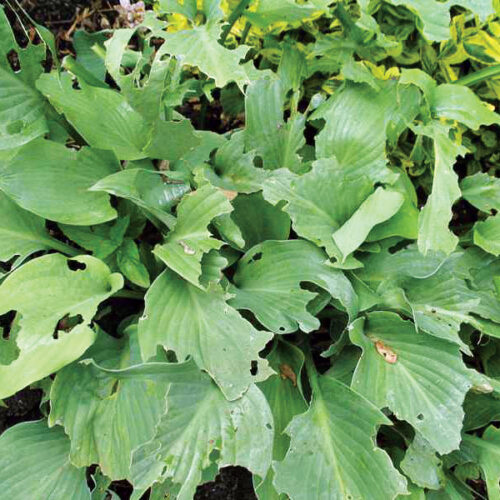
Slug damage
What it looks like: Slugs make smooth-edged, irregularly shaped holes, often along leaf edges or between veins, and leave slimy trails on leaves and nearby ground.
What to do: Maintain an organically healthy garden that encourages natural predators. Keep the plants free of stress with proper nutritional balance, moisture, and growing conditions. Use only organic fertilizers, and natural predators like frogs and toads will keep the slugs in check. We have not used a slug bait in over 32 years, and slugs are prolific in our region.
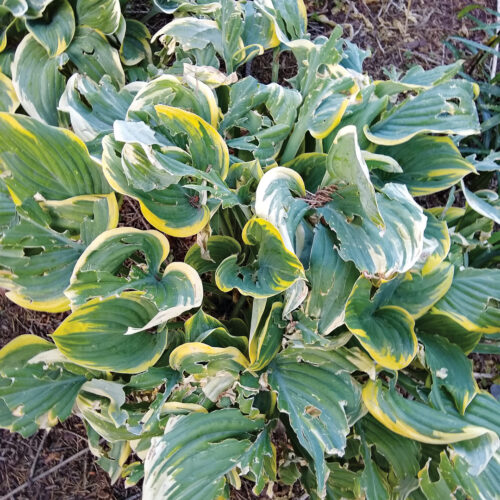
Hail damage
What it looks like: Hail causes jagged, torn holes between veins, especially on the outer part of leaves.
What to do: If possible, protect your plants with sheets, overturned nursery pots, or other resilient coverings when hail is predicted. Remove damaged leaves, and if the damage is severe, cut plants to the ground and allow them to resprout. Your plants may be slightly smaller the following year, but not significantly so.
See some of our favorites hostas in 10 Amazing Hostas.
Tony Avent is the owner of Juniper Level Botanic Garden and Plant Delights Nursery in Raleigh, North Carolina.

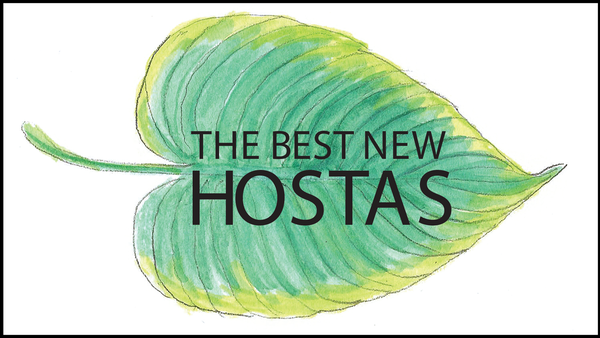
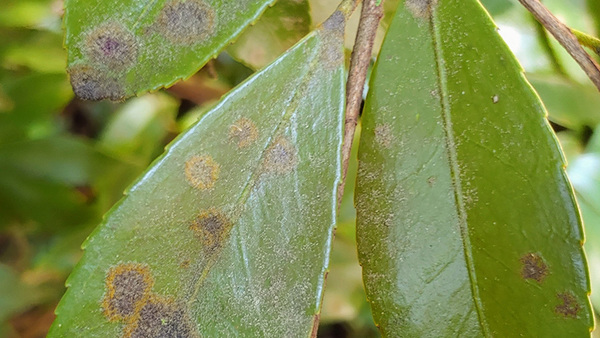

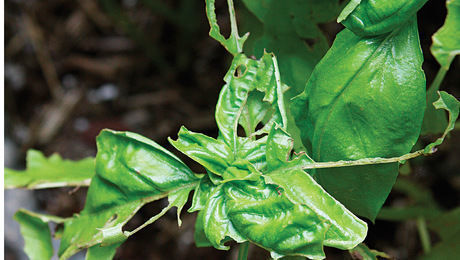












Comments
Log in or create an account to post a comment.
Sign up Log in